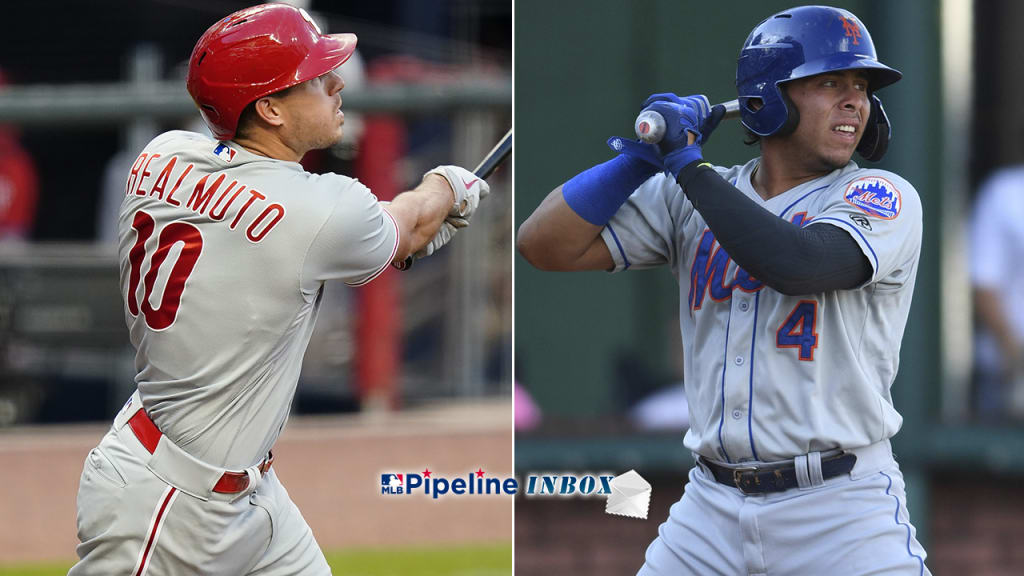
Mets fans are excited about new owner Steve Cohen and his plans for the franchise, which leads to our first Pipeline Inbox question ...
I'm going with a third option. If the Mets sign J.T. Realmuto as their catcher of the present, that won't preclude Francisco Alvarez from becoming their catcher of the future.
Realmuto will be 30 next season, while Alvarez, the Mets' No. 2 prospect, will be 19 and has yet to play above Rookie ball. Signed out of Venezuela for $2.7 million in 2018, Alvarez is both an advanced prospect for his age but also realistically three years away from Citi Field. By the time he's ready to be a big league regular, Realmuto will have a lot of miles on him and unlikely to still be catching 120 games per year.
I could see Alvarez debuting in late 2023 and sharing catching duties with Realmuto if the veteran is still going strong in '24. We'll probably have a universal DH by then, which will make it easier to give them both at-bats in the same lineup.
The Tigers (No. 2 in MLB Pipeline's organization talent rankings) and Marlins (No. 5) are two of the most improved systems in baseball over the last couple of years. Both have several intriguing prospects on the bottom half of our team Top 30 lists.
My favorite Detroit prospect who fits that profile is third baseman Colt Keith, their 2020 fifth-round pick out of a Mississippi high school. The Tigers' No. 21 prospect has the tools to hit for both average and power, and he also has a strong arm that will be an asset at the hot corner and possibly on the mound.
My Miami sleeper to watch is outfielder Peyton Burdick, a 2019 third-rounder who batted .407/.538/729 with 15 homers and 24 steals as a redshirt junior at Wright State before hitting .308/.407/.542 with 11 homers and 64 RBIs in his 69-game pro debut. The Marlins' No. 16 prospect has big raw power, makes enough contact to tap into it and moves well for a 6-foot, 205-pounder.
It's not out of the question that Barber will rank at or near the top of MLB Pipeline's Astros Top 30 at the end of the 2021 season. He's a potential 20-20 player who might be quick enough to stick in center field and has the arm strength for right field.
A California high school product who signed for an over-slot $1 million as a fourth-rounder in 2019, Barber stood out with his tools and performance as a late addition to alternative camp and a full participant in instructional league. He also has made an impression with his makeup and intensity, which one club official compared to Alex Bregman's.
I've been reporting on prospects for more than three decades now, and there's no question that 2020 has been the most difficult and unusual year of my career, for obvious reasons. I believe we have close to our usual feel for guys who came out of this year's Draft, but we have very sparse information on the development of pro players. There's a small sample size of big league performance and mostly anecdotal reports from alternative camps and instructional league.
I'm not changing the weight I put on individual factors. We may get a report that a starting pitcher made a jump in velocity in shorter stints in alternative camp or instructional league, but what does that really mean? Can he maintain the increased velo in longer outings and every fifth day for a full season? If he throwing harder at the cost of life or command? How does the pitch play against hitters in games over an extended period? We don't really know the answers to any of that, so it's hard to draw meaningful conclusions.
We'll update MLB Pipeline's Top 100 Prospects list in January and the team Top 30s around the start of Spring Training, like we always do. We'll update the reports and change the rankings as needed, but they'll be more static than usual.
